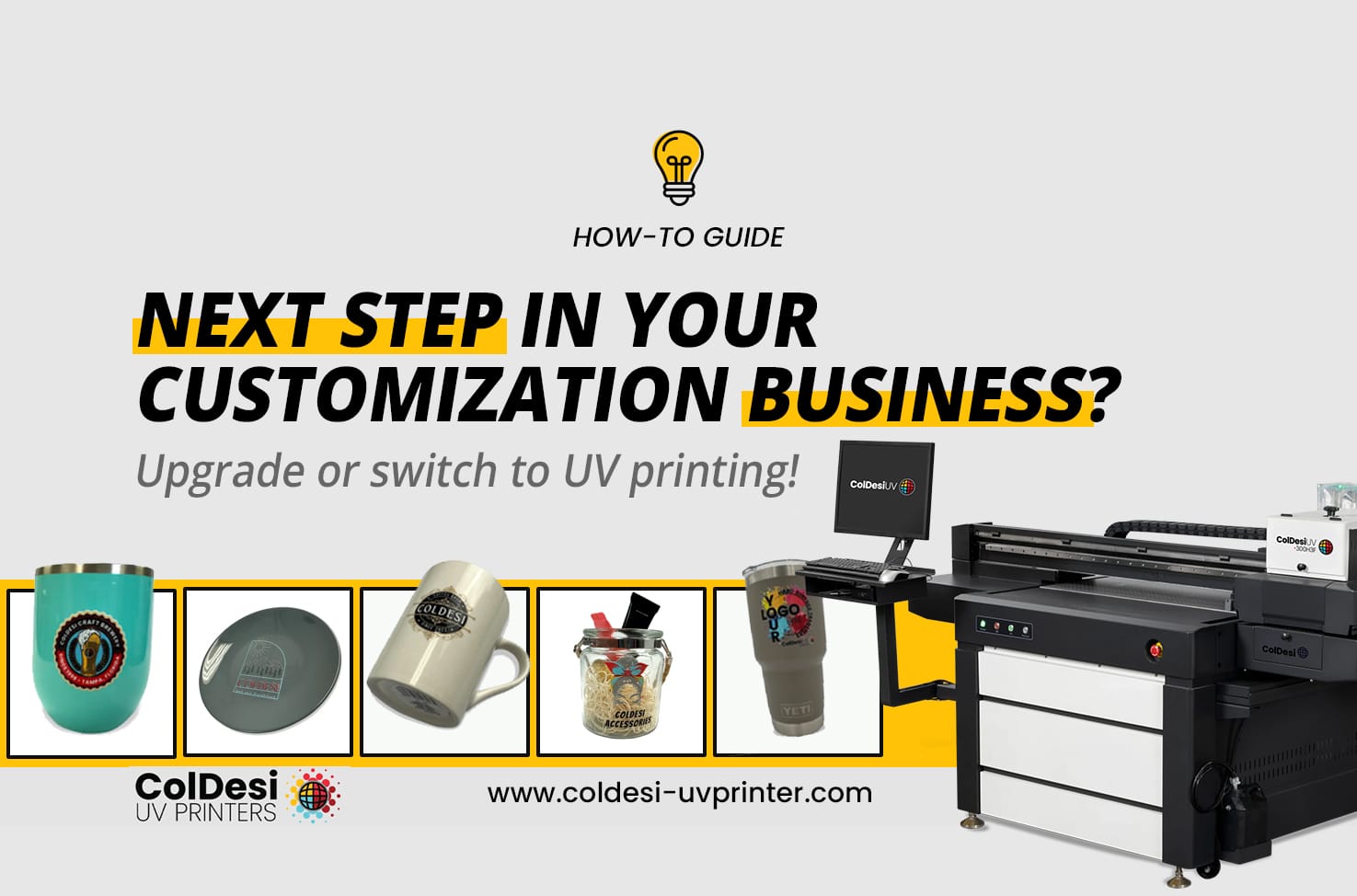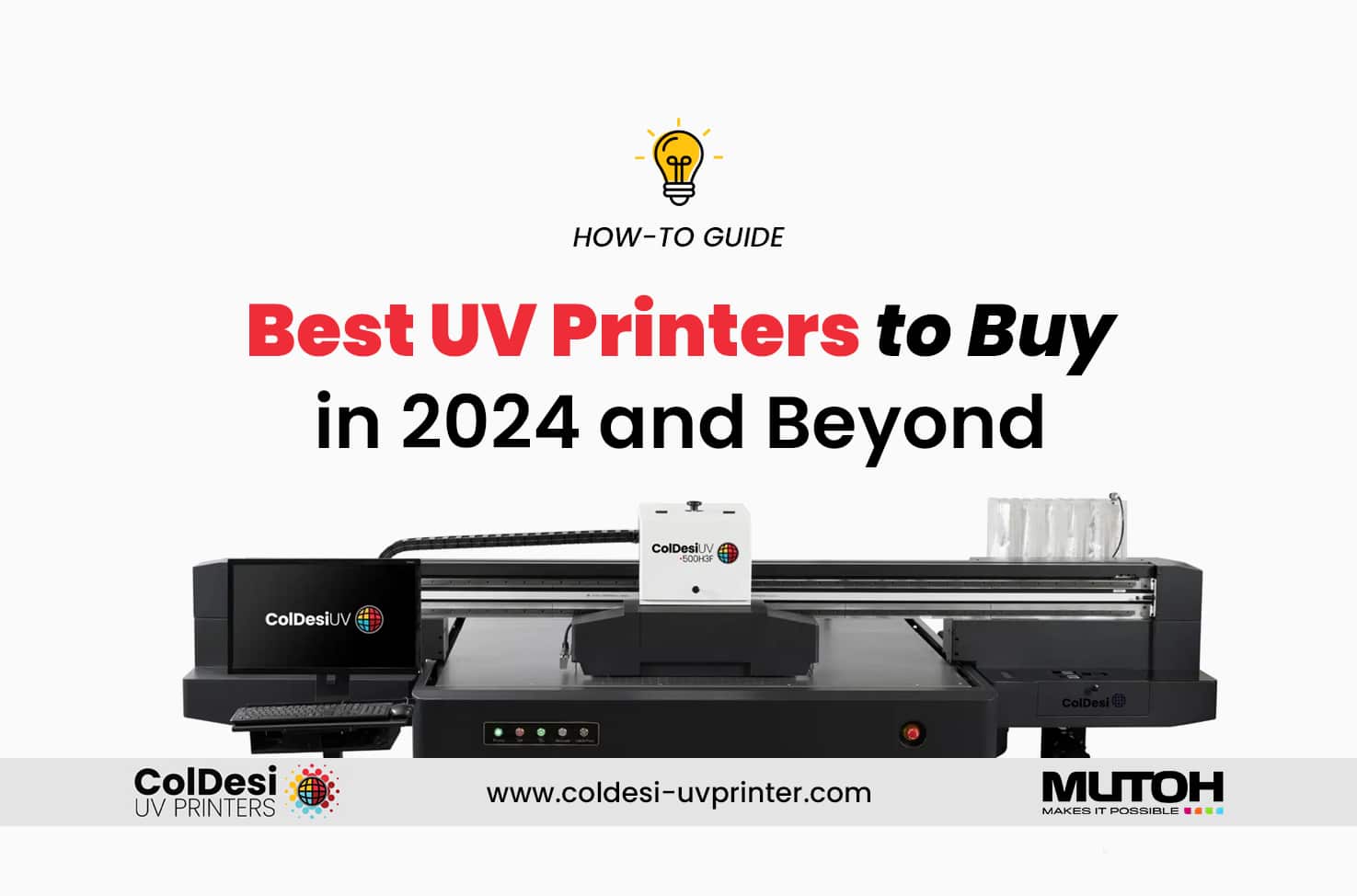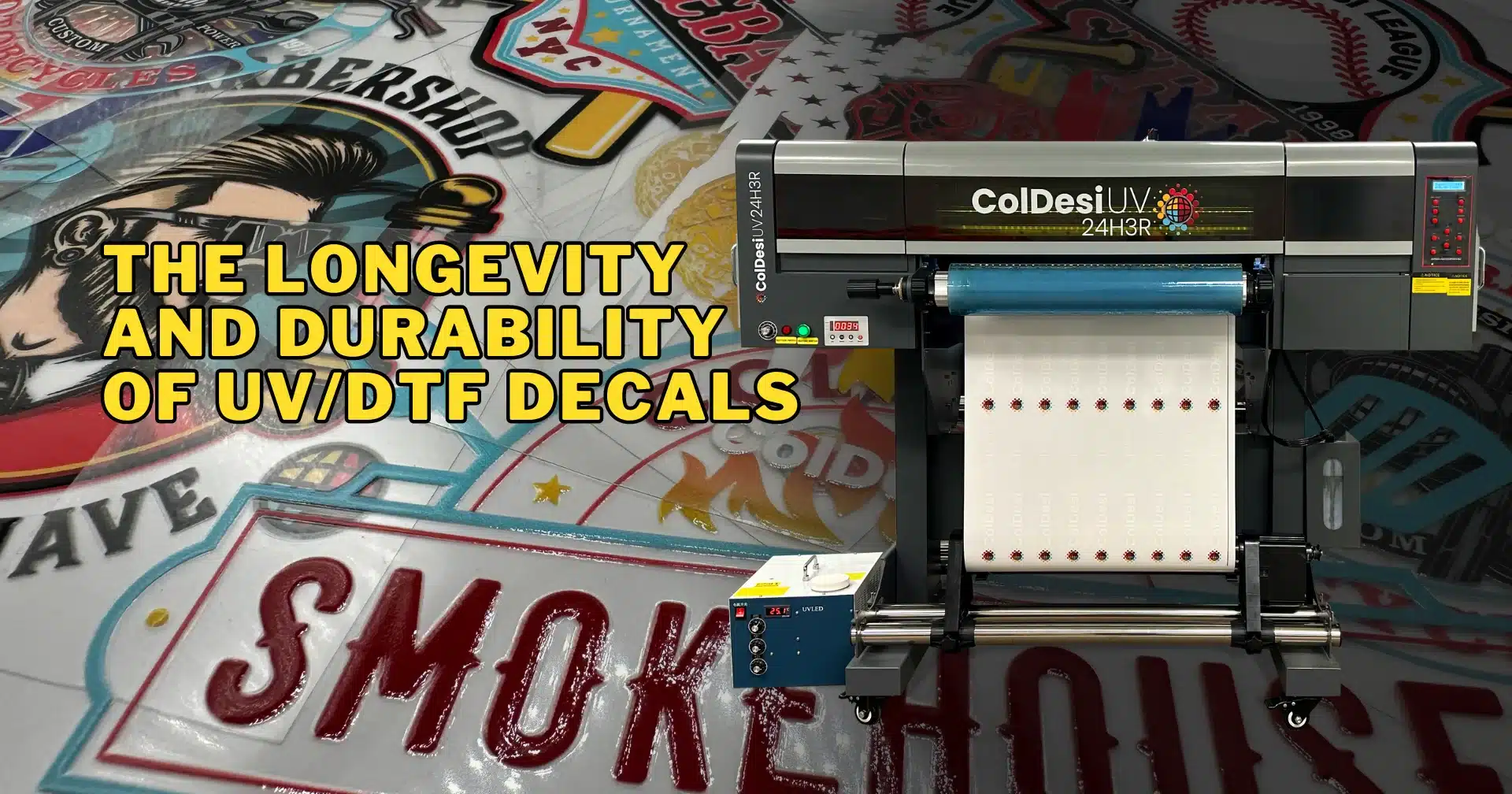What is a UV Printer, How Does it Work,
and What Can You Do With It?
If you’re here, you have some sort of interest in UV printing. Perhaps because you see it as a hobby, or eventually as a way to earn some cash.
Or… you’re just someone who likes to lurk around and sniff out everything there is to know about UV printers and try to get a handle on how things work.
Whatever you’re here for, this post is written to create a more complete picture of what a UV printer is, how it works, and what you can do with it.
So, you won’t have to piece together all the different bits of information across the internet.
The way this is going to work is simple and straightforward; we’ll start with the basics and build from there. So, by the time you’re done reading this, you’ll have a solid theoretical (and practical) foundation of this method of printing.
And as usual, we’ll sprinkle in some hands-on videos along the way.
Having said that, let’s get right to it.
What Exactly is UV Printing?
Like anything, we have to start somewhere—and getting basics down first— is a good place to start! The first question, then, is what exactly is UV printing?
Well, perhaps the answer can be found in the name itself and in some combination of the following two features.
Just as the name says, this method of printing uses a combination of ultraviolet (UV) light, and UV-curable inks to produce the final print.
This method of printing is unlike any other one you’ve used (or heard of) in the past. The difference is to be found in the printer being able to print direct-to-object.
What it means is that, as soon as the ink hits the surface, it cures almost immediately. It is different in the sense that you don’t need a traditional heat press mechanism to cure the ink.
As a direct result of this, decorators can have their items ready-for-use in a snap.
Of course, that’s a slightly oversimplified view on what UV printing is.
Let’s continue our conversation and go a bit deeper into different types of UV printers. We think this will give you a more complete understanding of what UV printing really is and what it can be used for.
If you’d like to read more information about this topic, here’s another article on what is UV printing.
There are different types of UV printers you can buy to fit certain needs, purposes, and projects. Here, we’re going to cover the four of them we think you should know about.
Flatbed UV Printer: The name of this UV printer gives it away. In practice, it’s used for printing a digital image onto things that are flat. Think travertine tiles, canvas, signs, phone cases, or anything else that is flat enough to work on.
Rotary UV Printer: You won’t always need (or want) to print on flat objects. At other times, you’ll be given a project or a task to decorate cylindrical or curved shapes. And for those types of things, a rotary UV printer is the ideal choice. With it, you can decorate things like cups, mugs, bottles, candles, plastic tubing, and things of that nature.
Roll-to-Roll UV Printer: It also goes by the name ’roll-fed’ printer, because of the way it works. The phrase just highlights the method by which the printer receives and feeds the print material. It can be anything compatible that comes in continuous rolls such as vinyl, fabric, paper, or film. This roll-to-roll system then feeds this flexible material through the printer’s print area and deposits ink onto its surface. As it passes through the area with UV lamps, the ink instantly cures and dries, producing a print that’s immediately ready for use.
Hybrid UV Printers: Typically, hybrid UV printers combine the features, function, and capabilities of both flatbed and roll-to-roll UV printers in a single device. This lets you seamlessly switch between two ’modes’ whenever you need them. In terms of what they can take on, a hybrid printer can print on rigid materials like aluminium composite panel (ACP), wood, metal, glass, and acrylic, as well as flexible materials and substrates such as vinyl, banners, fabric, films, and others.
Now that you’ve been briefly introduced to UV printing, and you understand what it is, how it works, and the different types of UV printers that you can get (and work with), now is the time to talk about how long UV prints last.
How Long Does a UV Print Last?
Decorators who come to us usually have many of the same questions. One question that always gets asked is, how long does a UV print last?
And actually, we think, it’s really a very good question to ask because this question is really asking us (the ones who match and provide you with the best equipment), are we a reliable source of UV printers, do we understand our products, and can you trust us?
And to answer that, we have to say that we’re still here, decades later, offering the best training, service, and support in the industry to over 51,000 customers and growing.
So, we’re just going to leave it at that and circle back to the beginning question, how long can you expect a UV print to last?
The typical answer to that is around 2 years, give or take. It depends on factors such as what you print, (and on what), the size of the design, and the conditions in which the item will be used and stored.
These, and other reasons, end up influencing the longevity of UV prints in different ways.
Let’s carry on to the next talking point.
Benefits & Advantages of UV Printing
Now we’ve stepped into the ‘benefits and advantages of UV printing’’ section of the article. Here, we’ll list out the things we love about UV printing and that are worthy of your attention.
So, let’s go straight to the picks.
Environmentally Friendly: UV printing offers several environmentally friendly advantages compared to traditional printing methods. Firstly, UV printing typically uses UV-curable inks that contain fewer volatile organic compounds (VOCs) and fewer harmful chemicals than solvent-inks that are, for example, frequently used in screen printing. It’s safer for both the planet and the people handling the prints. Additionally, UV printing generates less waste thanks to its efficient curing process.
Quicker than Traditional Printing: The next benefit that has made its way on this list is speed. UV printing is well-known for its rapid curing process, as you’ve come to learn from this article. This quick curing enables UV printers to achieve significantly faster production times and print rates. As a result, they are ideal for time-sensitive projects and high-volume production runs.
Durability: We touched upon this point earlier in the article, but UV prints are virtually the most durable of all. They can go over 2 years without fading or showing signs of wear and tear. Plus, they come out waterproof and resistant to all weather types.
Reliability: UV printers have an unquestionable quality. Through our benchmark tests and hundreds of production hours, we have found that UV printers consistently deliver reliable performance with minimal downtime. Their sturdy, robust construction and advanced technology ensure smooth operation, whether you’re handling small small-scale projects or large-scale production runs.
Versatility with Materials: UV printers are incredibly versatile and can print on a wide range of materials and surfaces. These include traditional substrates like paper, cardboard, cardstock, and plastic, as well as more unconventional materials such as wood, metal, glass, and ceramics.
Minimal Running Costs: Practically speaking, UV printing offers competitive running costs compared to other printing methods. While the upfront investment in UV printers may be higher, they often provide cost savings over time.
Easy Maintenance: You’ll be pleased to hear that UV printers require very little upkeep. But it’s not to say that you can skip doing regular maintenance and taking proper care of the equipment.
Productivity: Combination of all of the above factors enhance productivity and reduce turnaround times. So, you can focus on your work, key tasks, or other priorities around the shop.
We’re willing to bet that if you get the UV printer for yourself, start working with it, and take a closer look, you’ll find more than 8 benefits…
In the meantime, let’s press forward and explore some of the different items you can decorate with a UV printer.
You can read up more on benefits, advantages, and reasons why you need a UV printer HERE.
What Items Can Be Customized With a UV Printer?
Now, let’s get to the fun part! Let’s make time and go over some of the items you can embellish with fun patterns, textures, or graphics for your personal use or to turn a profit.
- Phone cases
- Laptop skins
- Mouse pads
- Coasters
- Panels
- Tiles
- Wooden plaques
- Acrylic signs
- Bottles
- Glassware (e.g., wine glasses, mugs)
- Metal water bottles
- Thermos cups
- Keychains
- Awards & trophies
- USB flash drives
- Leather wallets
- Notebook covers
- Canvas prints
- Jigsaw puzzles
- Skateboards
- + MORE
Your imagination is the only limit to what you can create! Give it some thought and some time and certainly look around at what others are decorating and selling in their shops.
You can simply make what you see! But, of course, don’t forget to put your own spin on things!
That said, we’ve come to the end of this article. Before you leave, let’s gather our thoughts and tie this one up.
Final Thoughts
For us, our hope is that we taught you a thing or two. However big or small that might have been, we hope it’s going to help make a difference for your future and solve some of your individual needs.
So, we guess that leads us to the final question: where do you go from here?
Well, we’d like to invite those of you ready to take the step, to look at different UV printers we sell, and if you have any questions speak on the phone with one of the product specialists.
So with that, we thank you for your time, and we look forward to hearing from you!







